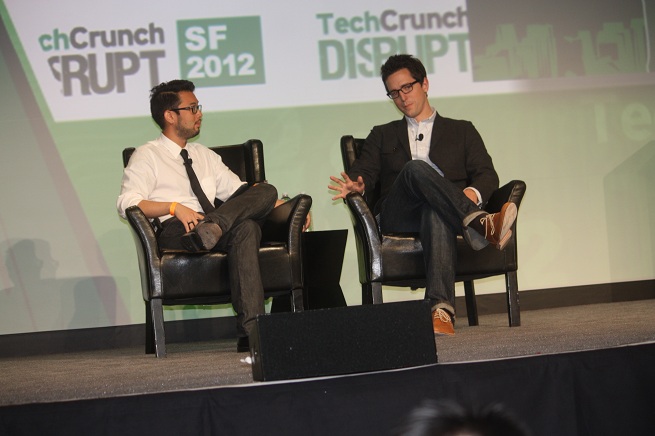SAN FRANCISCO — The open social graph is a crowded, bustling world filled with people, noise, and dangers. Path founder Dave Morin is building a haven where users can document their lives and share their memories without exposing themselves to the world.
While telling his “Founder’s Story” today at TechCrunch Disrupt, Morin identified privacy and simplicity as his guiding principles.
“We like to use the metaphor that Path is your home inside of Facebook city, where Twitter is the news network,” Morin said. “When you think about your home, you can be inside, or you can pick up your phone or walk out the door. There are a different set of rules inside than outside. We think of privacy in terms of control, and on Path, only you control your expression on the network.”
Part of maintaining an environment that feels intimate and safe is limiting the number of people involved. When Path initially started, networks were limited to 50 friends, and the average user had about 15 friends. When conceptualizing the ideal network size to create a close-knit community, Morin referenced Dunbar’s number, or the limit to the number of people with whom an individual can maintain stable social relationships. With the product’s second iteration, the allowable network size moved to 150, and the average user now has about 40 friends.
“It was an interesting piece of anthropological learning,” he said. “When we moved to 150, people went to the next ring out, and we achieved the network we desired.”
While on Path, users can upload photos and share their thoughts, movements, and activities. It is a mobile journal to chronicle your day-to-day life, and you can share that life with a tight group of friends. Photo sharing and “thoughts” remain the most popular types of content sharing, although the recent addition of “asleep” and “awake” postings has been surprisingly popular. Another successful addition to the Path platform is integration with Nike’s FuelBand, where members can post their daily exercise activity. User feedback revealed that by allowing people to share their workouts with friends, they are more motivated to keep fit.
“We will never stop user from doing what they want to do with their data,” Morin said. “We believe that truly the user should be in control of their data. “We want people to add deeply personal content, and we are thinking of ways for them to contribute to Path that are smart and make sense. It is not just a journal of life, but it can create a conversation for them with this thing they maybe do every day.
As a former manager at Apple and Facebook, Morin knows a little something about product development. Path is known for its intense focus on design and user experience, which Morin credits for its high rate of user acquisition, engagement, and retention.
“We are incredibly focused on simplicity,” he said. “We consider with everything we do and are willing to spend a long period of time on an interface. True simplicity takes a lot of time. The interface should almost feel inevitable. How did we create a menu that lets people contribute multiple types of content and is delightful to use? It took us about 20 iterations and six months of focusing on a single interface to make that breakthrough. One of most important things to think about is how to create a human interface with software.
With over 3 million downloads and half of its users actively engaging with the product, Path’s strategy seems to be working well. Discussions are ongoing about developing interfaces for tablets as well as other additions to the types of content people can share. In the last few months, China has become the No. 2 country to use Path, and use is expanding to more metro pockets within the U.S.
“We are seeing constant, continuing growth, ” Morin said. “Users are more excited than they have ever been. We are not slowing down, and for us, that means success.”
VentureBeat's mission is to be a digital town square for technical decision-makers to gain knowledge about transformative enterprise technology and transact. Learn More

